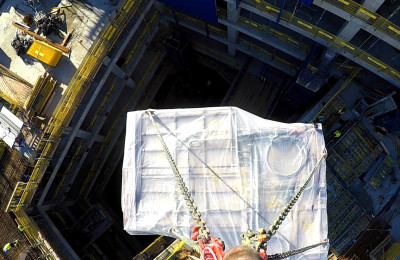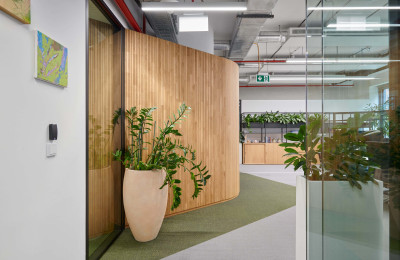How to innovate: listen to reality in silence
Our Architecture Psychology & User Experience Specialist Michal Matlon and professor of cognitive science at the University of Vienna and CSO at the Living Core Markus Peschl on how to shape the working environment in order to nurture innovation. This article will make you feel like part of the audience with video sequences directly taken from the FutureNow conference.
Nowadays, there is a belief that the market asks for permanent disruptive innovations even though stability and predictability are what people actually want. But are organisations capable of ongoing innovation delivery? What precautions should we bear in mind when thinking about workspaces, that would not only be aesthetic and trendy but also functional when it comes to supporting innovations?
There is a wide misconception about what is and what isn’t beneficial for innovation. Play video of Michal discussing it below to find out.
People are constantly pushed to be visible and accessible for collaboration but what they actually desire are stability and predictability.
True novelty cannot be created by following mechanical processes. Thus, the spatial and organisational environment needs to be, above all, ENABLING.
Enabling also means giving up control and letting people be unproductive, if they need to be. Why?
Because it lets them be more creative.
To be more creative people need to be themselves.
And to be themselves they need to connect and be with themselves.
Listen to reality in silence
For innovation we have to listen to the world and give control. Humans love control, that’s the reason why everything is structured, predetermined with processes.
With innovation this must be turned upside down, you must give up control and be open to something which is novel, something you haven’t seen yet. It is not so much about our brains, but rather about future potential. In the next video sequence, Markus explains how we usually when it comes to innovation try to resolve some problem instead of thinking about the emergent need.
When thinking about innovation people usually try to resolve some problem
But it’s rather about the emergent purpose– the need we didn’t identify yet.
Connect with yourself
Our minds work on predictive patterns when perceiving reality – our past experiences determine the way we see the world – we cannot perceive with our senses something that we haven’t recognised and processed before.
Novelty is something we don’t know, so how can we see something we haven’t experienced yet? We can overcome it, but our brains tend to be conservative. What principles can we derive from this insight? Listen to what Markus has to say about it.
Markus Peschl on the principles that shape innovation making.
We shape our buildings and afterwards our buildings shape us
When designing a workspace all of our efforts should be people-centric. Why? Because again it’s people who will spend their working time there. And the way it’s set up has a direct influence on how people feel, how productive they are, and how enabled they feel to create and innovate.
Invest time and energy into the people working for your company. Discuss with teams what their dynamics are, what their needs are, what are they missing in their current workspace, and explore how the office can support them in their everyday working routines.
Last but not least, provide them with shelters (e.g. focus rooms, library or relax room) where they can freely reject stimulation, regain focus, let their mind wander, and go through mental restoration without self-reproach.
If you would like to know more about how we at HB Reavis translate innovation into our approach, read interview with our Innovations & Partnerships Lead, Gaia Arzilli.



